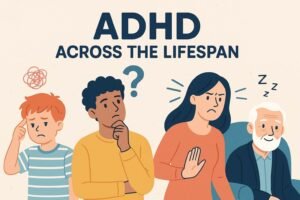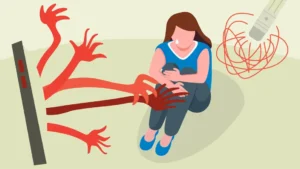Trauma is more common than we think—and it doesn’t have to define you. Whether your experience stems from childhood pain, sudden loss, or repeated distress, healing is possible. You deserve compassion, safety, and the right support to move forward.
What Is Trauma?
Trauma is the emotional response to an event or experience that overwhelms your ability to cope. While many associate it with major disasters or abuse, trauma can also result from emotional neglect, chronic stress, or even microaggressions.
Acute, Chronic, and Complex Trauma
- Acute Trauma: From a single event like an accident or assault.
- Chronic Trauma: Ongoing situations like bullying, domestic abuse, or war.
- Complex Trauma: Repeated trauma, often in childhood, involving betrayal or abandonment.
Common Causes of Trauma
Childhood Abuse and Neglect
Early trauma shapes how we view ourselves and the world. Lack of safety, trust, and love in childhood can have long-lasting impacts.
Accidents and Natural Disasters
Even physically surviving an event doesn’t mean the emotional aftermath won’t linger. Flashbacks, fears, and hyper-vigilance are common.
Domestic Violence and Assault
These traumas often include feelings of helplessness, shame, and loss of identity.
Loss, War, and Systemic Oppression
Grief, displacement, and marginalization create trauma that can be generational.
How Trauma Affects the Brain and Body
Trauma literally rewires the brain. The amygdala becomes overactive (increasing fear), the hippocampus (memory) may shrink, and the prefrontal cortex (decision-making) becomes impaired.
Physically, trauma may cause chronic pain, headaches, digestive issues, or autoimmune problems. The nervous system stays on high alert, which makes rest and connection difficult.
Signs and Symptoms of Trauma
- Nightmares, flashbacks, or intrusive thoughts
- Emotional numbing, shame, or guilt
- Irritability, anger outbursts
- Avoidance of reminders or people
- Physical tension, stomach pain, or sleep issues
You Are Not Alone: Normalizing the Trauma Response
Your body and mind are doing their best to protect you. Trauma reactions like dissociation, anxiety, or numbing are survival mechanisms—not flaws.
There’s no timeline or “correct” way to heal.
My Approach to Helping You Heal From Trauma
I offer a trauma-informed approach that emphasizes emotional safety, trust, and consent at every step. Together, we can gently explore your story without re-triggering pain.
Evidence-Based Techniques:
- EMDR (Eye Movement Desensitization and Reprocessing)
- Somatic Experiencing (reconnecting with the body)
- Cognitive and Narrative Therapies (reframing the story of your trauma)
We build emotional resilience step by step—no rushing, no pressure.
Self-Care and Grounding Techniques
- Breathing: Diaphragmatic breath calms the nervous system
- Mindfulness: Focus on the present reduces anxiety
- Art or Music Therapy: Gives voice to emotions without words
- Movement: Gentle yoga, walking, or dance to release stored tension
Rebuilding a Sense of Self and Safety
Healing includes:
- Setting healthy boundaries
- Learning to trust your intuition
- Reclaiming your voice and choices
- Practicing self-compassion
When to Seek Professional Help
If you feel overwhelmed, stuck, or unsafe in your body or mind, reaching out is a sign of strength. Therapy can help you release trauma’s grip and rewrite your inner narrative.






